Celebrating 100 years
Space
Leicester has been home to the National Space Centre since 2001, but our association with space research and exploration goes back even further.
The university has been home to space science pioneers, an astronaut professor, meteorites and much more.
Professor Jeff Hoffman
Our astronaut professor
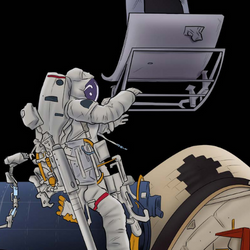 Professor Jeff Hoffman is a former NASA astronaut who took part in five Space Shuttle missions and was one of two spacewalkers who rescued the Hubble Telescope (shown here in 1993). He started here as a research assistant and is now a Visiting Professor.
Professor Jeff Hoffman is a former NASA astronaut who took part in five Space Shuttle missions and was one of two spacewalkers who rescued the Hubble Telescope (shown here in 1993). He started here as a research assistant and is now a Visiting Professor.
Professor Ken Pounds recalls first meeting him at Harvard in 1971: “Jeff turned up out of the blue to enquire about coming here. His PhD supervisor, Giovanni Fazio, had suggested Leicester was the place to be in space astronomy.”
The adventurous Jeff “turned up in Spring, on crutches and with a leg in plaster. He had taken one risk too many skiing off-piste. On being chosen by NASA, Jeff said he believed his practical experience gained in Leicester was an important factor.”
Heather Couper (1949-2020) and Nigel Henbest
Stellar duo who brought astronomy to the masses
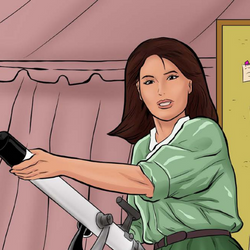 Heather and Nigel met at Leicester in 1971. They later set out to popularise astronomy through their partnership, Hencoup Enterprises. They produced many books and science programmes, and presented ‘Seeing Stars’ for the BBC World Service. Both have asteroids named after them.
Heather and Nigel met at Leicester in 1971. They later set out to popularise astronomy through their partnership, Hencoup Enterprises. They produced many books and science programmes, and presented ‘Seeing Stars’ for the BBC World Service. Both have asteroids named after them.
Couper was the first woman President of the British Astronomical Association. She appeared on BBC programmes including The Sky at Night, and presented Channel Four’s The Planets and The Stars series.
Henbest has written books, articles and radio and TV scripts, and won the Glaxo-Wellcome Science Writer’s Award. He has been Astronomy Consultant to New Scientist and Media Consultant to the Royal Observatory at Greenwich.
Professor Ken Pounds CBE FRS
Pioneer in the new science of X-ray Astronomy
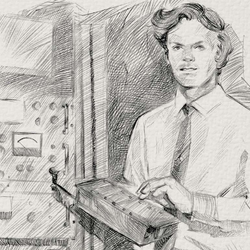 Ken Pounds came to Leicester from UCL in 1960 with a three-year Royal Society grant to study X-radiation from the sun and other stellar sources – although none were known then.
Ken Pounds came to Leicester from UCL in 1960 with a three-year Royal Society grant to study X-radiation from the sun and other stellar sources – although none were known then.
A team of space enthusiasts was quickly established. Access to Skylark rocket launches from Woomera and the small Ariel satellite allowed a rapid re-focus on several remarkably bright sources in the night sky. Ariel 5 (1974-80) detected 296 such cosmic X-ray sources, including stellar black hole A0620-00.
By then a Fellow of the Royal Society, Pounds was lead advocate for the first European X-ray mission, EXOSAT (1983-86), and UK Project Scientist for the German Rosat (1990-96) and Japanese Ginga (1987-90) satellites.
Returning to research in 1998 after a four-year secondment as chief executive of a new research council, he used X-ray spectra to show that, when overfed, massive black holes in galaxy nuclei eject excess matter as a powerful wind, in turn limiting star formation in the host galaxy.
The National Space Centre
An experience that’s out of this world
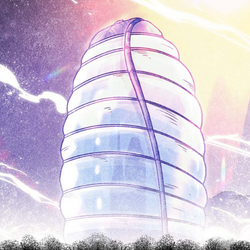 The National Space Centre, designed by Nicholas Grimshaw, is the UK’s only visitor attraction dedicated to space exploration, space science and astronomy. It boasts the UK’s largest planetarium and the 42-metre-high Rocket Tower.
The National Space Centre, designed by Nicholas Grimshaw, is the UK’s only visitor attraction dedicated to space exploration, space science and astronomy. It boasts the UK’s largest planetarium and the 42-metre-high Rocket Tower.
The University conceived and proposed the idea as a Millennium project, and our staff advised on exhibition content and developed educational programmes.
Today, 300,000 visitors come each year, including more than 80,000 school children. Inspiring them to study science is a key aim of the venture.
The National Space Centre was home to our Space Research Centre for several years as well as to mission control for the Beagle 2 mission to Mars, which involved University staff.
With the addition of Space Park Leicester on an adjacent site, Leicester’s position as the UK’s ‘space city’ is confirmed.
The Barwell Meteorite
The biggest meteorite to hit Britain
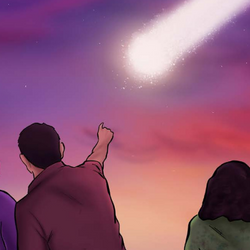 On Christmas Eve 1965 at around 4.20pm, a large piece of asteroid fell to Earth in the Leicestershire village of Barwell.
On Christmas Eve 1965 at around 4.20pm, a large piece of asteroid fell to Earth in the Leicestershire village of Barwell.
Residents saw a flash in the sky as it exploded followed by streaks of light and thuds as pieces hit the ground. It is the largest and best recorded meteorite shower in British history.
Experts, including those from the University, identified the meteorite, which was more than 4.5 billion years old, as a chondrite, composed of tiny droplets of rock called chondrules.
Leicester’s geologists and astronomers hit the headlines, and scientists from different institutions gathered to collect samples.
A fragment of the meteorite is held in the Geology Department’s specimen collection.
Skylark
The rocket that launched decades of research
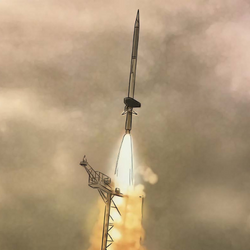 A shortened Skylark rocket stands in the Physics and Astronomy Building foyer. It represents a landmark in UK space research.
A shortened Skylark rocket stands in the Physics and Astronomy Building foyer. It represents a landmark in UK space research.
From 1957, Skylark gave UK space scientists the first direct access to space. Our new Space Research Group, led by Ken Pounds, quickly got involved. Their first launch in 1960 from Australia provided the first high-quality X-ray images of the solar corona.
From 1967, they identified other bright sources of X-rays in the night sky. It was the dawn of cosmic X-ray astronomy at Leicester. Over the next decade, Leicester researchers used Skylarks in increasingly sophisticated ways.
Brief rocket flights were superseded by satellites by the mid-1970s but the Skylark remains an icon of UK space science.
 Our 100 artwork was commissioned from Amrit Birdi and AmCo Studio Ltd and is ©AmCo Studio Ltd unless stated.
Our 100 artwork was commissioned from Amrit Birdi and AmCo Studio Ltd and is ©AmCo Studio Ltd unless stated.